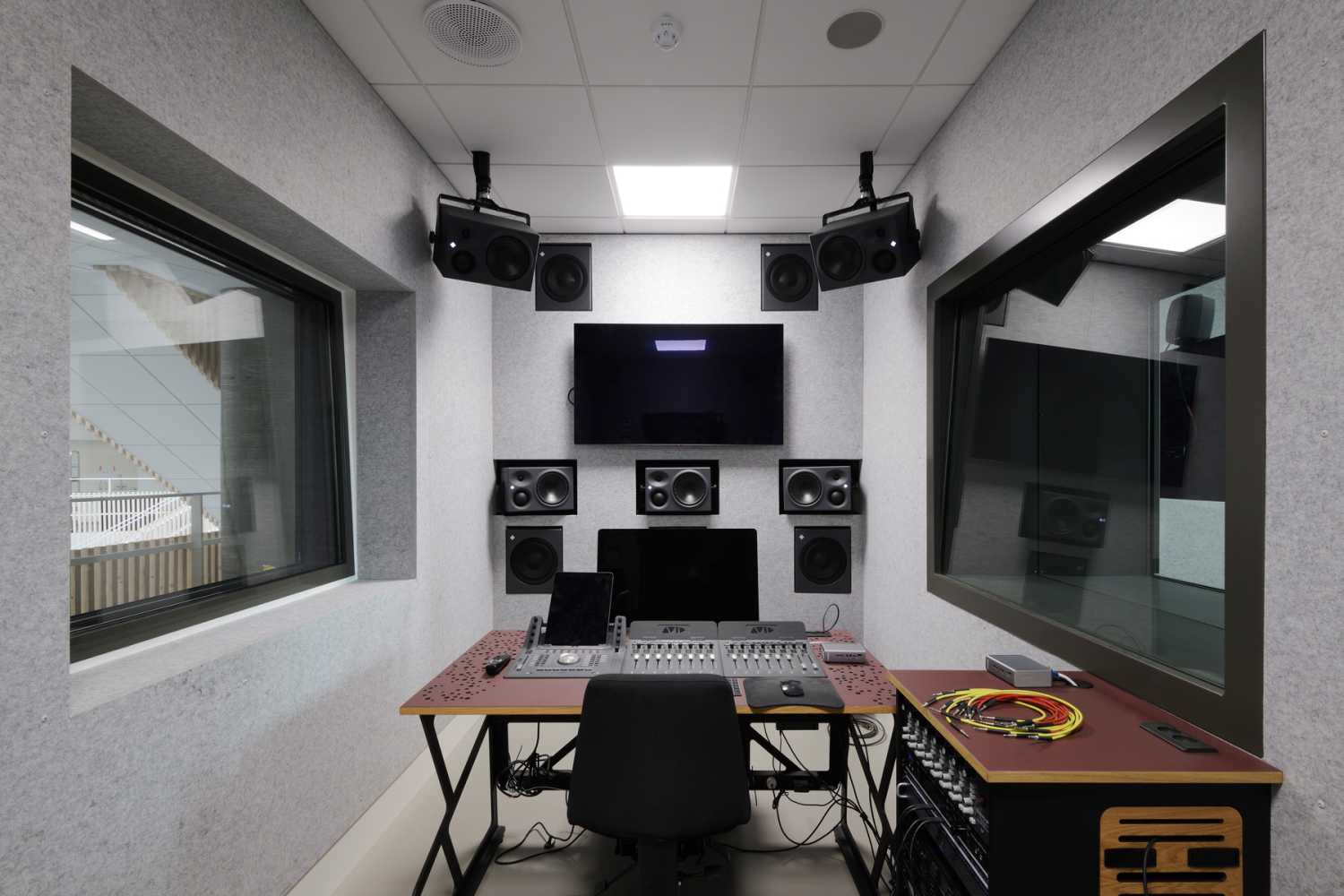Merging supports Sonic sound students
- Details

The college, which moved into a new purpose-built campus last September, enables students to explore an array of options and technologies relating to film, TV, gaming, and more. Lars Tirsbæk, a verified audio expert and lecturer at Sonic College, discusses trends in sound design, education, and the rise of immersive audio. An increasing number of Dolby Atmos projects passes through the college doors, and Merging Technologies equipment is used to streamline the production process.
“As a teenager, I dreamt of being a keyboard player in a band, so my background is in music,” shares Tirsbæk. “I had taken some pre-conservatory courses, and when I applied to join the conservatory, I began to think about what I really wanted to do. I love playing music, but I also enjoyed working with synthesisers and creating sounds with things like vocal processing on stage.”
Therefore, between 2011 and 2015, he completed a programme in sound design at Sonic College. Afterwards, the programme head contacted him and asked if he wanted to teach on the same course, marking the start of his teaching career. He began as a guest lecturer in recording technologies and music production and progressed into a full-time position. When the Sonic College moved to the new campus, Tirsbæk was put in charge of the build, and studio spec and design.
The new facility boasts impressive specifications, including a Dolby Atmos dubbing stage and a cinema playback room. This setup enables students to perform sound design, mixing, and playback of theatrical content.
Equipped with 40 Meyer Sound speakers, a Pro Tools setup with rendering and mastering capabilities, and an Avid console, they have everything needed for Dolby Atmos production. Additionally, there is an 80-seat cinema, a Foley stage with a Neumann system, two mastering studios, two stereo editing studios, a fully equipped recording studio, a synthesiser lab, and an immersive atrium featuring 180 loudspeakers.
Critical listening sessions are housed in purpose-built 7.1 classrooms, which accommodate up to 40 students. For monitoring and streaming, they utilise the Merging Anubis as a versatile monitor controller. It serves as a hybrid setup, allowing them to route audio inputs and outputs efficiently, including microphone feeds for online lectures via platforms like Zoom.
Tirsbæk explains some of the benefits of the Merging technology: “The Anubis caters to our college’s diverse connectivity needs, accommodating lecturers with their own sound cards and offering line inputs for additional flexibility. Its adaptability is invaluable in a sound college setting, particularly due to its network-based capabilities, which are not widely available in other controllers.”
Using AES67 and Dante devices, it’s possible to seamlessly connect various audio sources to the Anubis, allowing users to undertake different types of projects. Given the diverse needs of a sound college, the Anubis proved indispensable, offering versatility and adaptability.
Sonic College has incorporated another Anubis in the Dolby Atmos mastering suite, where it serves as a monitor controller. In this room, students work on Atmos projects for film, music, and gaming.
“The interface of the Anubis allows students to seamlessly work with immersive audio as if it were a stereo signal, remaining accommodating to the immersive age our students were born into and are used to,” observes Tirsbæk. “Outdated feature sets from a decade ago pale in comparison, where the inability to solo or mute speakers in an immersive format on a monitor controller seems unimaginable.”












